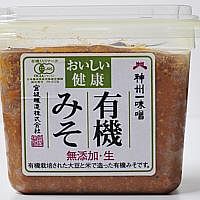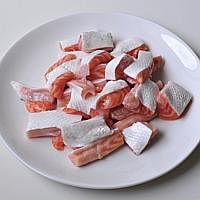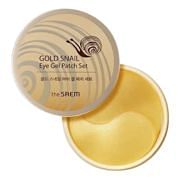Recently, my friend ordered some salmon belly miso soup in a Japanese restaurant we were dining at. That comforting soup stuck in my mind, especially when rain fell day after day.
I finally made myself some and it was so delicious; a one-pot meal that takes almost no effort.

Salmon belly miso soup. PHOTOS: ST.com
The main ingredients are fish scraps. Kuriya Japanese fish market at the basement of Great World City sells trays of salmon bones and also strips of the fish belly, both of which form the base for the soup.
I make a quick fish stock with just the fish bones, water and sake to take away some of the fishy smell. There is so much meat left on the bones that I scrape it off and add it to the soup.
Salmon belly strips, which are fantastic grilled, are also delicious in soup. They are cheap but taste so luscious.
Miso gives the soup body and I like to use awasemiso, a mix of the red and white varieties. It strikes a happy medium between sweet shiro or white miso, and more salty and punchy red or akamiso.



Salmon bones, miso paste and salmon belly strips make up the basic ingredients of this recipe
Then I look in the fridge and see what’s in the vegetable compartment. Daikon, carrot, shimeji and enoki mushrooms are perfect, as is napa cabbage sliced thinly. If there is silken tofu, I add it too.
If you have wakame on hand, hydrate the seaweed in some water and add it to the soup.
Although it is hearty and comforting on its own, a bowl of rice adds a bit more bulk to the meal. I like to spoon the last of the soup into what is left of the rice, mush it all up and eat. Lovely.
Leftover miso can be used as a marinade for chicken or fish. The Internet is full of recipes for miso-marinated cod fish. A friend of mine uses it on chicken thighs for chicken chop with a Japanese accent.
It can also be used for vegetable stirfries in place of oyster or soy sauces. The resulting gravy is good with rice.
The fermented soybean paste can also be used in salad dressing, with a neutral-tasting oil, grated ginger and a bit of lemon juice.
That tub of miso is not going to be in the fridge for long, I’ll make sure of that.
MAKE IT YOURSELF: SALMON BELLY MISO SOUP
Serves four to six
INGREDIENTS
300g salmon bones
1.5 litres water
60ml sake (optional)
300g salmon belly strips
250g daikon
400g napa cabbage, about half a head
200g shimeji mushrooms
100g enoki mushrooms
100g miso
300g block silken tofu
3 to 4 stalks scallions, chopped (optional)
DIRECTIONS
1. Rinse the salmon bones under running water. Place in a medium saucepan. Add the water and sake, bring to a boil, then turn the heat down. Simmer for 30 minutes.
2. Rinse the salmon belly strips under running water. Scrape the scales off the skin with a sharp knife, rinse again and pat dry. Using a pair of sharp kitchen shears, cut off the fins attached to some of the strips. Throw the fins into the pot with the salmon bones. Cut the belly strips into 3 to 4cm lengths, set aside.
3. Peel the daikon. Cut in half lengthwise and then slice thinly into semi-circles crosswise. Set aside.
4. Remove and discard the outer leaves of cabbage, cut out the core and cut the napa cabbage in half lengthwise. Slice thinly crosswise and set aside.
5. Slice the roots off the shimeji and enoki mushrooms, separate the caps, rinse under water, drain and set aside.
6. After 30 minutes, strain the fish stock into another medium saucepan. If you like, scrape the salmon off the bones and add it to the stock. Discard the bones.
7. Bring the stock to a boil. Add the miso and stir to mix thoroughly. Add the daikon, lower heat to medium and cook until the radish is soft.
8. Bring the heat back up to high, add the cabbage, mushrooms and salmon belly.
9. Slice the tofu into cubes and add to the pot. Bring to a boil.
10. Ladle the soup into individual bowls, top with chopped scallions if using. Serve immediately.
This article was first run in The Straits Times newspaper on September 15, 2013. For similar stories, go to sph.straitstimes.com/premium/singapore. You will not be able to access the Premium section of The Straits Times website unless you are already a subscriber.








